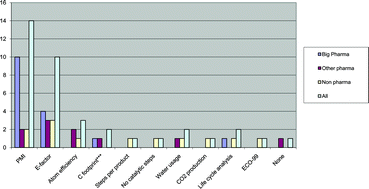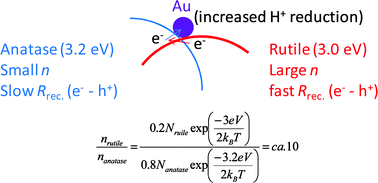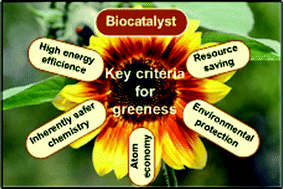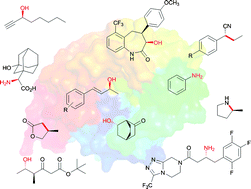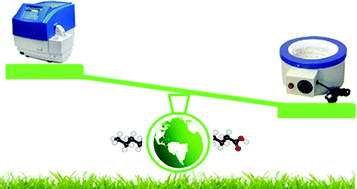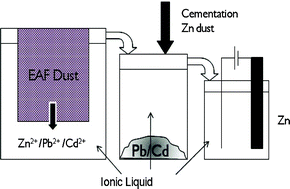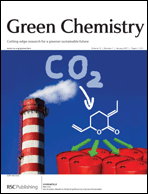 Green Chemistry has recently published a series of critical reviews that have been highly downloaded. These reviews aim to cover the trends and progress in the fields and also set the scene for cutting-edge research and innovations for a greener and sustainable future. More importantly the reviews highlight the challenges that need to be urgently addressed in each of those research areas.
Green Chemistry has recently published a series of critical reviews that have been highly downloaded. These reviews aim to cover the trends and progress in the fields and also set the scene for cutting-edge research and innovations for a greener and sustainable future. More importantly the reviews highlight the challenges that need to be urgently addressed in each of those research areas.
Use of carbon dioxide in chemical syntheses via a lactone intermediate
A. Behr and G. Henze
Green Chem., 2011, 13, 25-39
DOI: 10.1039/C0GC00394H
Converting carbohydrates to bulk chemicals and fine chemicals over heterogeneous catalysts
Maria J. Climent, Avelino Corma and Sara Iborra
Green Chem., 2011, 13, 520-540
DOI: 10.1039/C0GC00639D
Processing of metals and metal oxides using ionic liquids
Andrew P. Abbott, Gero Frisch, Jennifer Hartley and Karl S. Ryder
Green Chem., 2011, 13, 471-481
DOI: 10.1039/C0GC00716A
Viable methodologies for the synthesis of high-quality nanostructures
Jonathan M. Patete, Xiaohui Peng, Christopher Koenigsmann, Yan Xu, Barbara Karn and Stanislaus S. Wong
Green Chem., 2011, 13, 482-519
DOI: 10.1039/C0GC00516A
Enzyme-mediated oxidations for the chemist
Frank Hollmann, Isabel W. C. E. Arends, Katja Buehler, Anett Schallmey and Bruno Bühler
Green Chem., 2011, 13, 226-265
DOI: 10.1039/C0GC00595A
5-Hydroxymethylfurfural (HMF) as a building block platform: Biological properties, synthesis and synthetic applications
Andreia A. Rosatella, Svilen P. Simeonov, Raquel F. M. Frade and Carlos A. M. Afonso
Green Chem., 2011, Advance Article
DOI: 10.1039/C0GC00401D
Greener solvents for ruthenium and palladium-catalysed aromatic C–H bond functionalisation
Cedric Fischmeister and Henri Doucet
Green Chem., 2011, Advance Article
DOI: 10.1039/C0GC00885K
The irruption of polymers from renewable resources on the scene of macromolecular science and technology
Alessandro Gandini
Green Chem., 2011, Advance Article
DOI: 10.1039/C0GC00789G
You may also be interested in some of the review articles published in 2010:
Technology development for the production of biobased products from biorefinery carbohydrates—the US 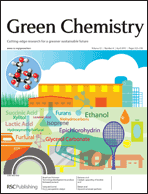 Department of Energy’s “Top 10” revisited
Department of Energy’s “Top 10” revisited
Joseph J. Bozell and Gene R. Petersen
Green Chem., 2010, 12, 539-554
DOI: 10.1039/B922014C
Catalytic conversion of biomass to biofuels
David Martin Alonso, Jesse Q. Bond and James A. Dumesic
Green Chem., 2010, 12, 1493-1513
DOI: 10.1039/C004654J
Vegetable oil-based polymeric materials: synthesis, properties, and applications
Ying Xia and Richard C. Larock
Green Chem., 2010, 12, 1893-1909
DOI: 10.1039/C0GC00264J
Glycerol as a sustainable solvent for green chemistry
Yanlong Gu and François Jérôme
Green Chem., 2010, 12, 1127-1138
DOI: 10.1039/C001628D
Synthesis of cyclic carbonates from epoxides and CO2
Michael North, Riccardo Pasquale and Carl Young
Green Chem., 2010, 12, 1514-1539
DOI: 10.1039/C0GC00065E
Enzymes in neoteric solvents: From one-phase to multiphase systems
Pedro Lozano
Green Chem., 2010, 12, 555-569
DOI: 10.1039/B919088K


